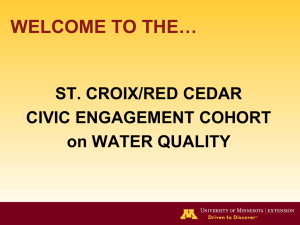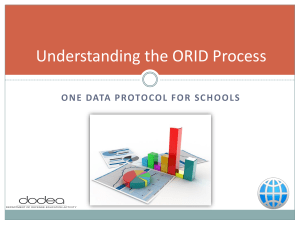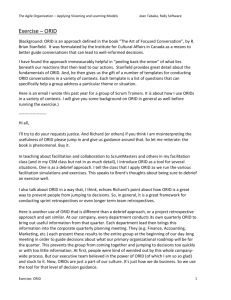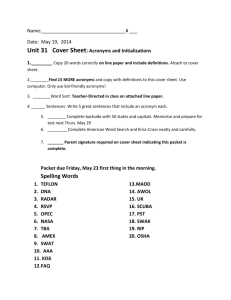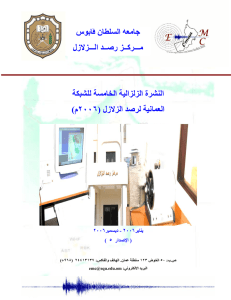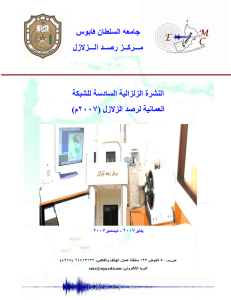Tell
advertisement
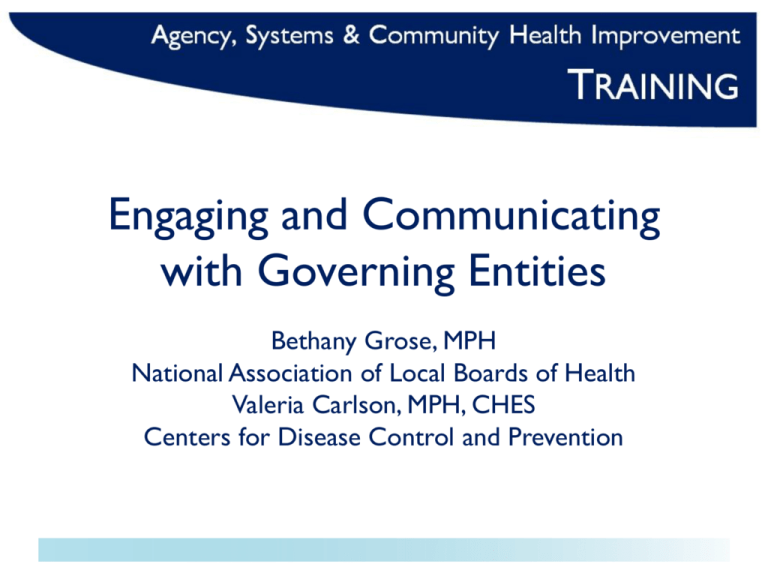
Engaging and Communicating with Governing Entities Bethany Grose, MPH National Association of Local Boards of Health Valeria Carlson, MPH, CHES Centers for Disease Control and Prevention Session objectives • Know factors that contribute to a board’s understanding • Identify at least four common communications styles • Practice at least three communications strategies • Recognize at least two different communication methods Governance Functions The Governance Functions (board of health or other governing body) The 10 Essential Public Health Services (health department) What knowledge do your board members have? • • • • • • Medical or health related Business, finance, management Industry Customer service Public health And lots more! What knowledge do your board members need? • General public health knowledge • Jurisdictional statutes and bylaws • Picture of public health in the community Priority issues • • • • What’s important to your community? What’s important to your board members? What’s important to the health department? What’s important to elected leaders? Is the answer to all four of these questions the same? Known challenges • Preconceived notions of roles • Varying personalities and communications styles • Individual priority areas for board focus • Lack of available time / other resources • Turnover in board membership or health department leadership Unexpected challenges • Priority issues for a single board member • Sudden emergencies • Political changes outside your control Norton’s Communicator Style Measures • • • • • • Dominant Friendly Attentive Relaxed Contentious Dramatic • Animated • Open • ImpressionLeaving • Communicator Image Norton, R.W. (1978). Foundation of a Communicator Style Construct. Health Communication Research 4(2) 99-113. Learning Pyramid Lecture Reading Audio/Visual Common learning methods used by boards Demonstration Discussion group Practice by doing Teaching others Adapted from the National Training Laboratory, Bethel, Maine Back to Basics Understanding the lingo: Where do you begin? What if a public health official had written Nike’s slogan? “While an occasional disinclination to exercise is exhibited by all age cohorts, the likelihood of positive health outcomes makes even mildly strenuous physical activity all the more imperative.” www.plainlanguage.gov for ideas on how to communicate better! Andy Goodman, 13th Annual Ned Baker Lecture, http://www.bgsu.edu/colleges/hhs/page72205.html Decoding the Lingo Let’s try decoding some lingo for your board: • Community Health Assessment • Community Health improvement Plan • Quality Improvement • Evidence-based practice • Practice-based evidence Imp rove ment Use multiple methods • • • • Provide handouts before the event Have written handouts at the event Use audio / visual presentations Encourage small group discussion Follow the Three T’s • Tell me what you’re gonna tell me • Tell me • Tell me what you told me Tell me three times Rule of 3 Template Stick to 3 main points Break it up with pictures Be Prepared • Know what you’re going to say • Verify your data • Use handouts Consider your audience • • • • • • Who are you talking to? What information do they need? What is their level of public health literacy? How do they prefer to receive information? When do they prefer to get it? What format will work best? Acronyms, Acronyms Everywhere! • CHIP: Children’s Health Insurance Program? Community Health Improvement Plan? Chemical Hazards Information Packaging? • PHAB: Public Health Accreditation Board? Parole and Humanitarian Assistance Branch? Physically Handicapped and Able Bodied? www.acronymfinder.com – see what else your acronyms stand for! Tips and Tricks Tip #1:Your voice makes an impression • • • • • Pitch Inflection Pace Articulation Pronunciation Tip #2: The KISS Principle • Keep • Keep • It • It • Simple, • Silly! • Simple, • Silly! Tip #3: Liven it up! • • • • Pictures Colors Breaks Mooooovement Tip #4: …but try not to distract them. Don’t present too much information at once • 10 - 20 - 30 •6x6x6 • Rule of thirds Communications Methods Objective, Reflective, Interpretive, Decisive (ORID) questioning • • • • What do we know about this topic? How do we feel about this topic? What does it mean for us? What are we going to do? http://pacific-edge.info/orid/; http://topfacilitation.net/Docs/ORIDING.cfm ORID Example: Objective • What do we know about this topic? – We hosted a 10K run last month – 450 people registered to attend – 700 actually showed up – We ran out of parking spaces ORID Example: Reflective • How do we feel about this topic? – I felt frustrated because I couldn’t find a parking place – I don’t want to participate again unless the issues are resolved – It could have been better if… – I wish we had… ORID Example: Interpretive • What does it mean for us? – Why is it important to do this again? – What if, instead, we… – How about next time… – How did our thinking change because of this? ORID Example: Decisional • What are we going to do? – Will we do this again? – What changes will we make? – Who will be responsible for those changes? Exercise: Make a decision Single Overriding Communications Objective (SOCO) • What is the core message you want people to take away from this report? – Short, self-contained – Active words • What are three or four facts/examples that support that message? http://www.cdc.gov/tb/publications/guidestoolkits/forge/ToolkitWord.htm An example of a SOCO • Safe food is everyone’s problem • Elect me – I’m better than the other candidate! • Eats shoots and leaves • Eats, shoots, and leaves Example of a SOCO plus supporting messages • Elect me – I’m better than the other candidate! – I’ve voted in favor of legislation that supports your position twice as often – I bring the right experience to the table – I feel very strongly about an issue that concerns you Exercise: Develop a message from your decision Questions?
